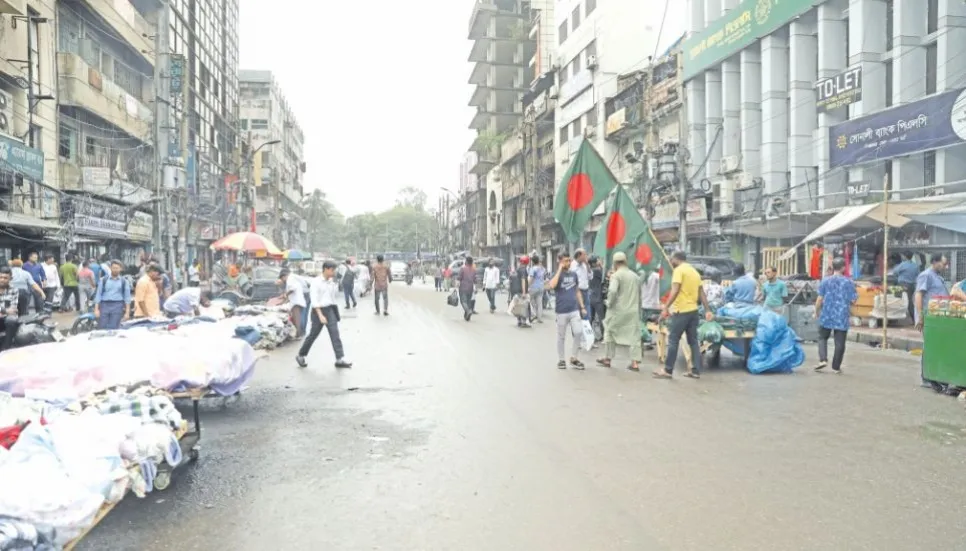
Gulistan is known as one of the busiest areas in Dhaka, serving as a central hub for government, corporate, and business activities. It is also infamous for its traffic jams, pickpockets, and hawkers.
However, since the recent change of regime, the area has witnessed a noticeable decline in the number of hawkers and a reduction in related harassment.
"Where hawkers once set up temporary shops on both sides of the roads from Gulistan to Baitul Mukarram National Mosque, from the GPO intersection to Paltan, under the Mayor Hanif Flyover, and in the surrounding areas, selling various products such as clothes, slippers, jewellery, and seasonal items, the area is now almost empty."
After visiting these areas, this correspondent found that many of the hawkers were actually goons affiliated with the Hawkers League. They fled the area following the decline in their leaders' influence, resulting in a significant sense of relief for residents.
According to a list by the Bangladesh Hawkers Federation, there are 18,000 hawkers in Gulistan who conduct business by occupying footpaths and roads. Sources say that to secure these spots, a one-time payment ranging from Tk 1 lakh to Tk 5 lakh had to be made to a certain group or syndicate, but this practice is now a thing of the past.
Some hawkers reported that as much as Tk 20 crore was being extorted from businesses occupying the footpaths in these areas. Political leaders collected this money through linemen who extracted payments from the hawkers.
Sources revealed that a portion of this money was shared with the former ruling party, law enforcers, and leaders of the hawkers' associations.
Md Habib, a children's clothing vendor, told The Business Post, “We used to live in constant fear of extortion groups who regularly demanded money from us. We had to pay between Tk 300 and Tk 500 per day, depending on the size and location of our shop. But now, no one is coming to collect money.”
“We hope this relief lasts,” he added.
There are allegations that local influential individuals, ruling party activists, law enforcement personnel, members of various organisations, and corrupt officials from the City Corporation and RAJUK were involved in setting up these shops by encroaching on roads and footpaths.
Another shoe seller, Md Hossain, said, “We are poor and cannot afford a shop, so we make a living selling things on the street. Things used to be tough here; we had to pay off a lot of people. But now we do not have to pay any money.”
Kabir Quader, a businessman who commutes daily from Shantinagar junction to Bangshal, said, “Earlier, it was impossible to walk along this road due to the hawkers. But now, there are far fewer hawkers. Only a few are still out there trying to make a living.”
The roads on the western side of Motijheel and Baitul Mukarram National Mosque are still largely free of hawkers. Although a few hawkers have set up shop in isolated spots, pedestrians can still move freely along that route. However, hawkers have been spotted in several places in the Paltan area.
Paltan resident Abul Mahim remarked, “Even though there have not been any hawkers for some time now, they will definitely return later. Even after being rehabilitated, they do not go to the designated places and instead sit on the streets.
“Without strict measures from the concerned authorities, a permanent solution to this problem is not possible.”